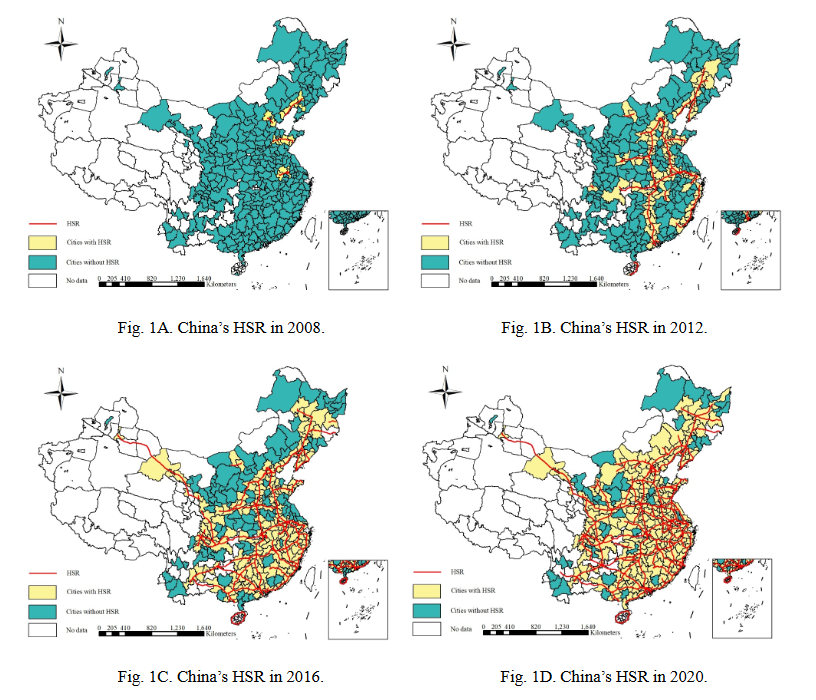In a working paper for the Fondazione Eni Enrico Mattei (a Milan-based sustainable-development think tank) researchers from Tianjin University ZhongXiang Zhang and Liang Ne have produced the first study on the comprehensive CO2 reduction effects of High Speed Rail (HSR).
Previous studies have looked at specific lines with some concluding the CO2 produced in the fabrication of the infrastructure and operating outweighed benefits, but this study has the benefit of being able to look at a whole country effect.
I’d recommend a full squint of the paper as along the way there are useful pearls about China’s overall development pattern in the last two decades.
Like, for instance, this map below.

It reveals how China is really about half the size a regular map implies.
Another fun observation was how in 2004, with the commendable and bold foresight for which China’s planners are justly famed, a plan was agreed for a network of a then unbelievable 12,000km of HSR. The network today, just 17-years later, is now nearly 38,000km and is planned to rise to 70,000km by 2035.
Back to the paper. By looking at data from 285-cities between 2004~2014 the researchers discovered significant CO2 reduction effects in all places that acquired HSR infrastructure. Moreover the effects were noticeable in up to an 80km radius of the affected cities.
In addition to the obvious effect of getting people off planes, out of cars and onto trains three other mechanisms appeared to be at work:
First, the presence of HSR infrastructure facilitated greater population density which is a sine qua non for urban emission reduction.
Second, the higher density led to higher land prices. This both pushed out industries uneconomic in the new circumstances (typically ‘dirtier’ ones) whilst the increased density led to higher FDI.
Thirdly, they describe a ‘knowledge spillover’ effect allowing workers to travel more freely between locations but with shorter journey times the value of knowledge/expertise doesn’t fray as happens on longer schleps.
Finally, to address the critics of specific line economics they took a closer look at the Beijing – Shanghai line from a total inputs perspective and concluded, when the impacts of all those dirty inputs are set off against the long term benefits to include towns along the lines, the whole process is still ‘green’.
You can access the full paper via this link Is HSR Green?
Happy Sunday.
